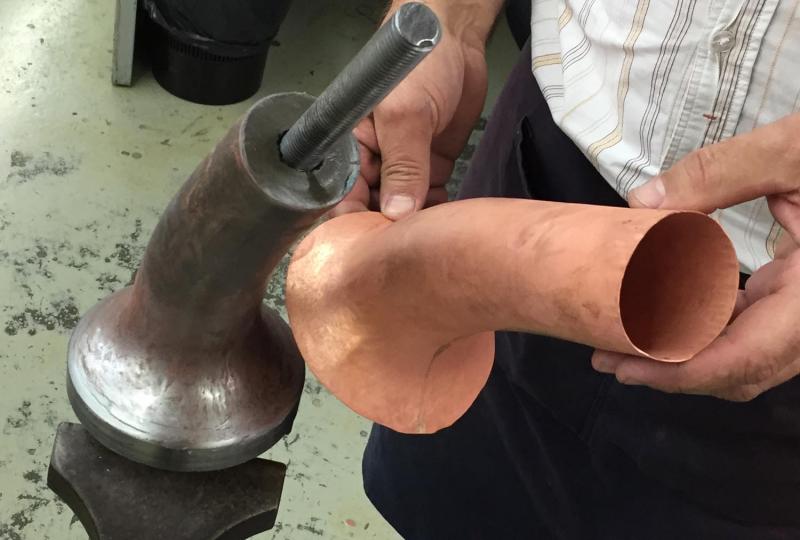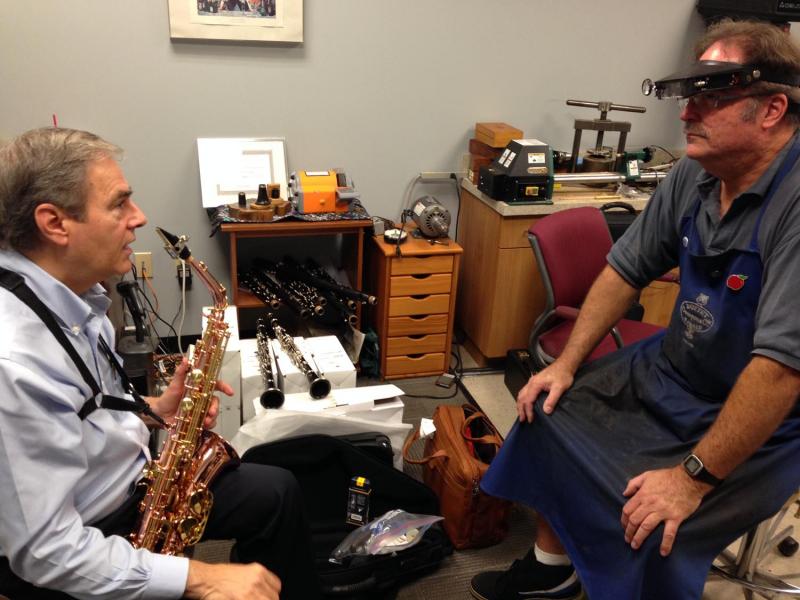 Forgot Username? Forgot Password?
Forgot Username? Forgot Password?
The New Buffet SENZO - a Perfect Marriage of French and German Saxophone Manufacturing
Buffet-Crampon’s history dates back nearly two centuries. They have a track record over the past fifty years as being the undisputed industry leader in high-end professional clarinet manufacturing, although they have been out of the saxophone making business for over 30 years. For those of us old enough to remember 30+ years ago, we recall with great fondness the old Buffet Crampon S3 Prestige line of saxophones, Buffet’s top of the line saxophone back in the day. These solid copper saxophones were truly unique with a sweet tone, an amazing response, innovative keywork and the best intonation to be found anywhere.
 The new Buffet SENZO saxophone, introduced to the American market in 2014, represents Buffet’s reintroduction into the professional saxophone manufacturing business. This new instrument is solid copper and builds on the success of the S1 and S3 Prestige and incorporates many improvements. It represents a perfect marriage of French and German saxophone making ingenuity, steeped in tradition but perfected by modern technology. This article will tell the story of the new SENZO saxophone in detail. After being on the market for only a few months, the reviews have been overwhelmingly positive by both jazz and classical player alike.
The new Buffet SENZO saxophone, introduced to the American market in 2014, represents Buffet’s reintroduction into the professional saxophone manufacturing business. This new instrument is solid copper and builds on the success of the S1 and S3 Prestige and incorporates many improvements. It represents a perfect marriage of French and German saxophone making ingenuity, steeped in tradition but perfected by modern technology. This article will tell the story of the new SENZO saxophone in detail. After being on the market for only a few months, the reviews have been overwhelmingly positive by both jazz and classical player alike.
To view pricing and sales details click here.
One really needs to play this instrument to fully appreciate just how sonically good it really is. In fact, when I first played the SENZO prototype at the 2013 NAMM show I told Buffet that it was the best modern saxophone that I had ever played. Three things grabbed my attention right away:
- The intonation is so precise on this saxophone that it's scary.
- The tone is full and beautiful but can have an edge when called upon.
- The response is instantaneous and easy, especially impressive in the lower register.
The sax has a nice focused core sound but it doesn't have the rigidity that so often accompanies a saxophone that centers so well. In this sense, tone shaping and subtly of expression come easy on the SENZO. It responds immediately to minute changes in airstream and oral manipulation so extended techniques speak effortlessly. It's also one of the most sonically even saxophones up and down the registers that I've ever played. These are some of the reasons both top-level classical and jazz players alike pine over this saxophone. There are some things regarding the feel of the SENZO that are different and may take some getting used to. The pearls are deeply cut giving it a very solid feel but taking away from that sense of a "broken in" feel that many of us are used to. Also, the right hand index finger pearl seems a bit inset until you get used to it. It is nice to have the adjustable palm keys. The instruments are available in pink gold, gold lacquer and silver plate finish options.
The design team for the SENZO was entirely French so the saxophone is conceptually 100% Buffet-Crampon in Paris. Its design was pioneered by retired craftsman, Ghislain Rousseau, a trainee of the famous French instrument maker Robert Carrée who designed the R13 clarinet and the Dynaction saxophone. Ghislain was responsible for the design of the Buffet S1 saxophone with Daniel Deffayet and also worked to design the S3 Prestige. The "secret" to the SENZO's extremely fluid response as well as highly accurate intonation can be revealed through an increase in the global volume of the instrument achieved by enlarging the cubic measure of the bottom bow, by lengthening the bell and by modifying the neck. A further secret lies in the entrance and exit diameters of the bottom bow. 


The SENZO body tube, bell, bottom bow and neck are all made in the Buffet factory in Paris. The body tube is identical to that of the S3 Prestige. The bow is an entirely new design that used the S1 as a point of departure. Improvements in intonation and response were achieved by altering tone hole placements and diameters and precisely determined inner tube (bore) dimensional adjustments. The neck incorporates a cavity on the back side just above the tenon. This cavity on the regular neck is smaller than the S3 which gives more flexibility, especially in the lower register. “Amplitude” necks are an acoustic option with a bigger cavity that gives more projection (this is actually the original S3 neck). The bell is hand hammered in the old-world tradition and then precisely formed under hydraulic pressure.
 The SENZO keywork is manufactured in the Julius Keilwerth factory in Germany. The keywork is similar to the Keilwerth CX90 in regards to the pivoting B/Bb table mechanism which was inspired by the Buffet S1 and S3 Prestige saxophones. The tubes are sent to Keilwerth from France and the assembly, full key fitting, padding and precise adjustment is all done in Germany on the Julius Keilwerth production line. The assembly process is highly scrutinized from the precision of each tone hole and pad cup to the facing of every post and fitting of every key. Having highly skilled workers already in place at Keilwerth makes this an ideal situation.
The SENZO keywork is manufactured in the Julius Keilwerth factory in Germany. The keywork is similar to the Keilwerth CX90 in regards to the pivoting B/Bb table mechanism which was inspired by the Buffet S1 and S3 Prestige saxophones. The tubes are sent to Keilwerth from France and the assembly, full key fitting, padding and precise adjustment is all done in Germany on the Julius Keilwerth production line. The assembly process is highly scrutinized from the precision of each tone hole and pad cup to the facing of every post and fitting of every key. Having highly skilled workers already in place at Keilwerth makes this an ideal situation.
 When the assembled instruments reach Paris they undergo a second round of fine tuning and are individually and extensively play tested by Fabrice Moretti, one of the most highly regarded saxophone instructors in the traditional school of saxophone in Paris and a former student of Daniel Deffayet. This is not simply a "pass through" step. Fabrice is an extremely fine-tuned player and is painfully critical. He is indiscriminate in his analysis and under ZERO pressure from Buffet to get instruments out the door. His job is quality control and Buffet takes that very seriously. I can tell you from speaking extensively with Al Maniscalco at Buffet Group USA, who is a top rate professional player in his own right and has witnessed this play test step first hand, that instruments get sent back regularly for adjustment and some are even out right rejected by Fabrice that may otherwise seem utterly perfect to us mere mortals. Instruments that are destined for North America then also go through a third round of extensive play testing in Jacksonville by Matt Vance and precision adjustment by Bruce Marking.
When the assembled instruments reach Paris they undergo a second round of fine tuning and are individually and extensively play tested by Fabrice Moretti, one of the most highly regarded saxophone instructors in the traditional school of saxophone in Paris and a former student of Daniel Deffayet. This is not simply a "pass through" step. Fabrice is an extremely fine-tuned player and is painfully critical. He is indiscriminate in his analysis and under ZERO pressure from Buffet to get instruments out the door. His job is quality control and Buffet takes that very seriously. I can tell you from speaking extensively with Al Maniscalco at Buffet Group USA, who is a top rate professional player in his own right and has witnessed this play test step first hand, that instruments get sent back regularly for adjustment and some are even out right rejected by Fabrice that may otherwise seem utterly perfect to us mere mortals. Instruments that are destined for North America then also go through a third round of extensive play testing in Jacksonville by Matt Vance and precision adjustment by Bruce Marking.





